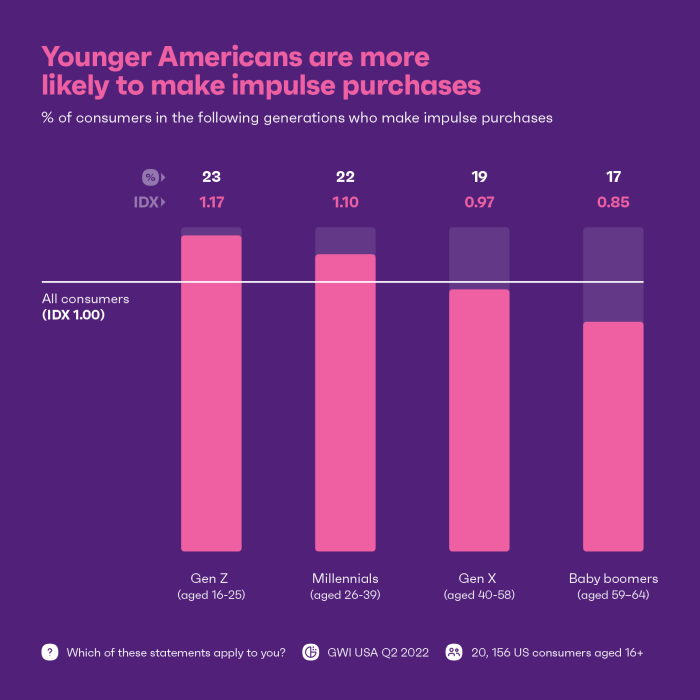A spur-of-the-moment unplanned decision to buy a product or service is a fascinating phenomenon that has captivated the attention of researchers and marketers alike. This behavior, characterized by impulsive purchases made without prior planning or deliberation, offers a unique insight into the complexities of consumer decision-making.
This article delves into the world of spur-of-the-moment purchases, exploring the triggers, motivations, and consequences associated with this type of behavior. We will examine the strategies employed by marketers to influence impulsive buying and analyze the impact of such purchases on businesses.
Additionally, we will consider the ethical implications of targeting impulsive buyers and discuss the responsibility of businesses to promote informed decision-making.
Definition and Characteristics

A spur-of-the-moment unplanned purchase decision is an impulsive purchase made without prior planning or deliberation. These decisions are typically driven by emotions and desires, rather than rational thought.
Examples of spur-of-the-moment purchases include:
- Buying a new outfit while browsing in a store
- Purchasing a gadget after seeing an advertisement
- Subscribing to a streaming service after watching a trailer
Triggers and Motivations
Spur-of-the-moment purchases are often triggered by external cues, such as:
- Eye-catching displays
- Limited-time offers
- Emotional appeals
Psychological and emotional motivations behind these decisions include:
- The desire for instant gratification
- Fear of missing out
- A need for self-reward
Marketing Strategies: A Spur-of-the-moment Unplanned Decision To Buy A Product Or Service
Marketers can influence spur-of-the-moment purchases through various strategies:
- Creating urgency and scarcity
- Using emotional appeals
- Providing limited-time offers
- Offering free samples or trials
Case study: Apple’s successful marketing campaign for the iPhone 13 leveraged scarcity and emotional appeal to drive spur-of-the-moment purchases.
Customer Behavior Patterns

Customers who make spur-of-the-moment purchases tend to have certain common traits:
- They are more likely to be impulsive and emotionally driven.
- They may have a lower income or limited financial resources.
- They often shop in physical stores rather than online.
Impact on Business

Spur-of-the-moment purchases can have both positive and negative impacts on businesses:
Positive impacts:
- Increased sales and revenue
- Improved customer satisfaction
- Enhanced brand loyalty
Negative impacts:
- Reduced customer loyalty
- Overspending and financial distress
- Negative word-of-mouth
Ethical Considerations

Targeting impulsive buyers raises ethical concerns:
- Businesses have a responsibility to promote informed decision-making.
- They should avoid exploiting vulnerable consumers.
- Regulations may be necessary to protect consumers from overspending and financial harm.
FAQ Explained
What are the common triggers for spur-of-the-moment purchases?
Common triggers include emotional responses such as excitement, boredom, or anxiety; social influences such as peer pressure or FOMO; and environmental cues such as attractive displays or limited-time offers.
How do marketers influence spur-of-the-moment purchases?
Marketers use various strategies to trigger impulsive buying, such as creating a sense of urgency, offering discounts or promotions, using persuasive language, and employing visual cues.
What are the potential consequences of spur-of-the-moment purchases?
Impulsive purchases can lead to both positive and negative consequences. On the positive side, they can provide immediate gratification and boost mood. However, they can also lead to financial strain, buyer’s remorse, and overconsumption.